Are you gearing up for an exciting conference presentation? Crafting the perfect letter to outline your presentation guidelines can be both exhilarating and a bit daunting. It's essential to ensure that your message is clear and engaging to captivate your audience right from the start. Let's dive into the specifics of how to create an effective letter that sets the tone for a successful conference experienceâread on to discover our detailed template!
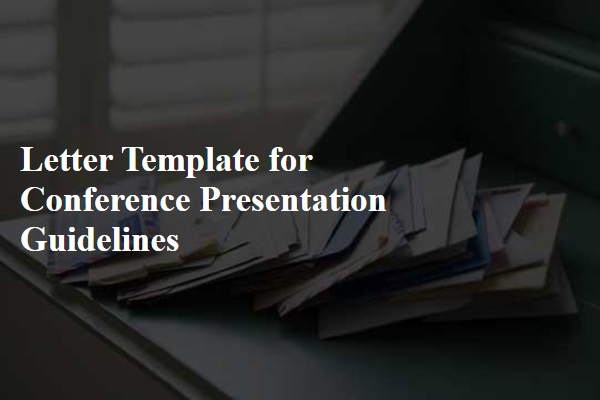
Audience Demographics
Understanding audience demographics is crucial for effective conference presentations, as it shapes the approach to content delivery. Presenters must consider factors such as age, educational background, professional experience, and cultural diversity of attendees. For example, a conference held in San Francisco in 2023 might attract a tech-savvy audience, predominantly between the ages of 25 and 45, with at least a bachelor's degree in technology or business. This demographic insight allows presenters to tailor language complexity and examples relevant to attendees' experiences. Additionally, recognizing the potential for diverse cultural perspectives can enhance engagement, making it vital to include inclusive references that resonate with an international audience at events like the Annual Software Development Conference. By aligning content with audience demographics, presenters can better connect with attendees, ensure clarity, and encourage participation during Q&A sessions.
Presentation Format
Conference presentation guidelines often emphasize the importance of adhering to specific presentation formats to ensure clarity and engagement. Presenters must prepare slides using software like Microsoft PowerPoint or Google Slides, with a recommended aspect ratio of 16:9 for optimal viewing on projectors. A maximum of 20 slides is often encouraged, featuring a mix of visuals and bullet points to highlight key information concisely, ensuring that each slide maintains a text limit of around 30 words. Clear, high-quality images, graphs, or tables should be used to illustrate data effectively, while maintaining legible font sizes (ideally 24 points or larger). Presentations typically last between 15 to 20 minutes, followed by a Q&A session, allowing for audience interaction and discussion.
AV Equipment Availability
For conference presentations, the availability of audiovisual (AV) equipment is crucial for effective communication. Standard equipment generally includes a high-resolution projector, screen, and microphones (both wired and wireless) for optimal sound quality. Presenters should verify the compatibility of their devices, such as laptops (preferably Windows or macOS), with the AV system to avoid technical difficulties. Additional tools like remote clickers for slide transitions, laser pointers for highlighting details, and extra cables (HDMI, VGA) may enhance the presentation experience. It is recommended to test all equipment at least one hour prior to the presentation time to troubleshoot any potential issues. Venues may also provide tech support professionals on-site to assist with AV setup and operations to ensure a seamless experience for both presenters and audience members.
Time Allocation
Conference presentations typically have strict time allocations to ensure an organized schedule. Presenters, such as researchers or industry experts, usually receive 15 to 20 minutes for their presentations, including a dedicated 5 to 10 minutes for audience questions. This format is prevalent in events like the International Conference on Machine Learning (ICML) or the Annual Meeting of the Association for Computational Linguistics (ACL), which attract hundreds to thousands of attendees. It is essential for speakers to manage their time effectively, utilizing clear outlines and visual aids to convey key findings succinctly, while also being prepared for a Q&A session, which encourages audience engagement and deeper discussions on complex topics. Adhering to these time limits is crucial for maintaining the conference's overall flow and allowing participants to maximize their learning experience.
Submission Deadlines
Conference presentation guidelines emphasize critical submission deadlines for participants. Typically, initial abstract submissions must be completed by August 15, 2023, allowing reviewers ample time to assess proposals. Full paper submissions often follow, with a due date set for September 30, 2023, ensuring all accepted abstracts are elaborated in detail. Final presentation materials, including slides and any supplementary documents, are usually required by October 15, 2023, to facilitate a smooth review process. Adhering to these timelines is essential for successful participation in events held at major venues like the Convention Center in downtown Chicago. Notably, late submissions may not be accepted, which stresses the importance of planning and organization for presenters to secure their spots in this esteemed conference.
Letter Template For Conference Presentation Guidelines Samples
Letter template of recommendations for effective conference presentations
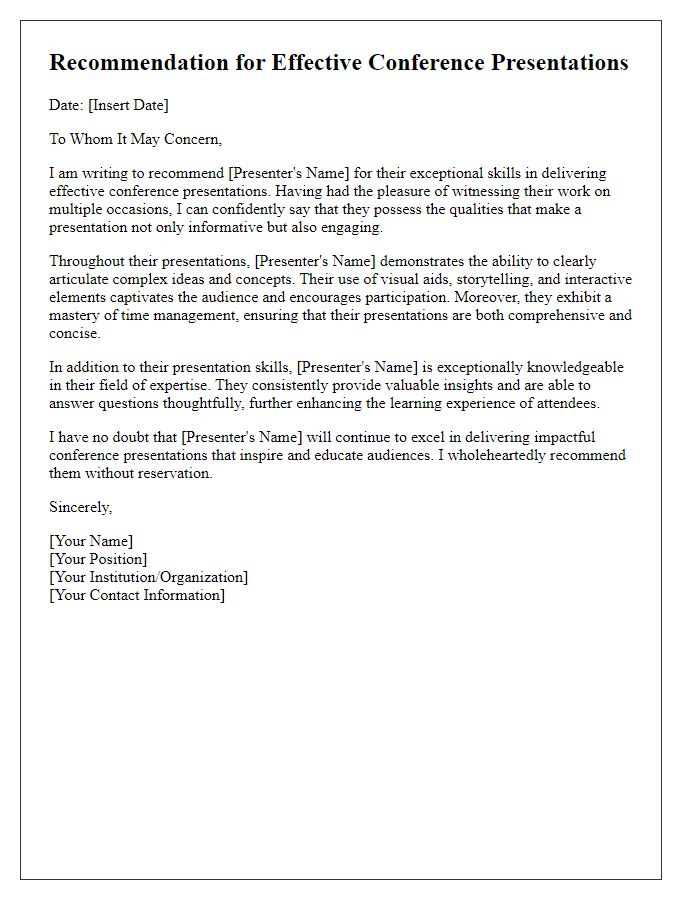

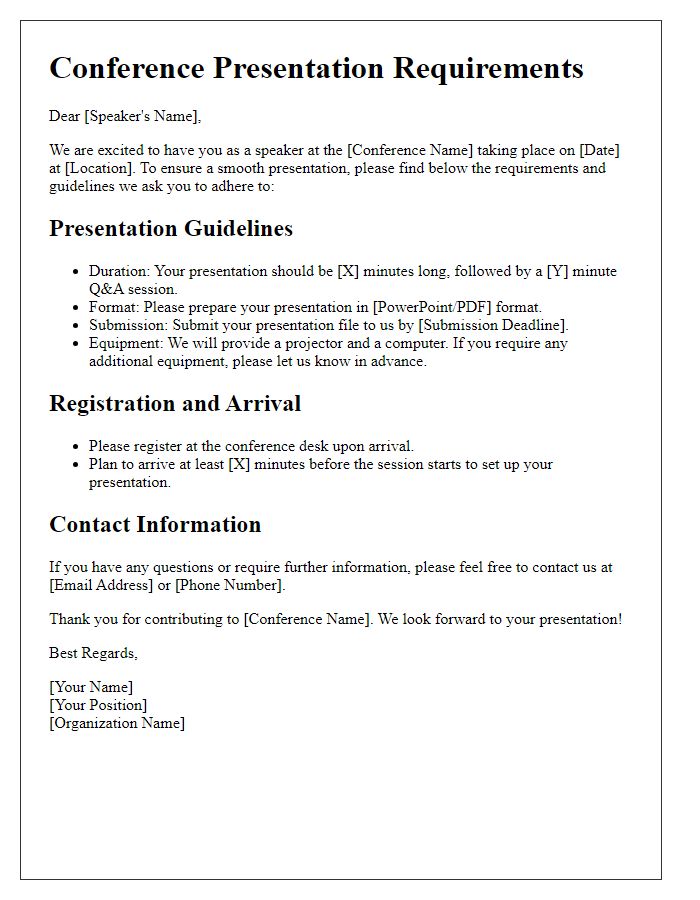

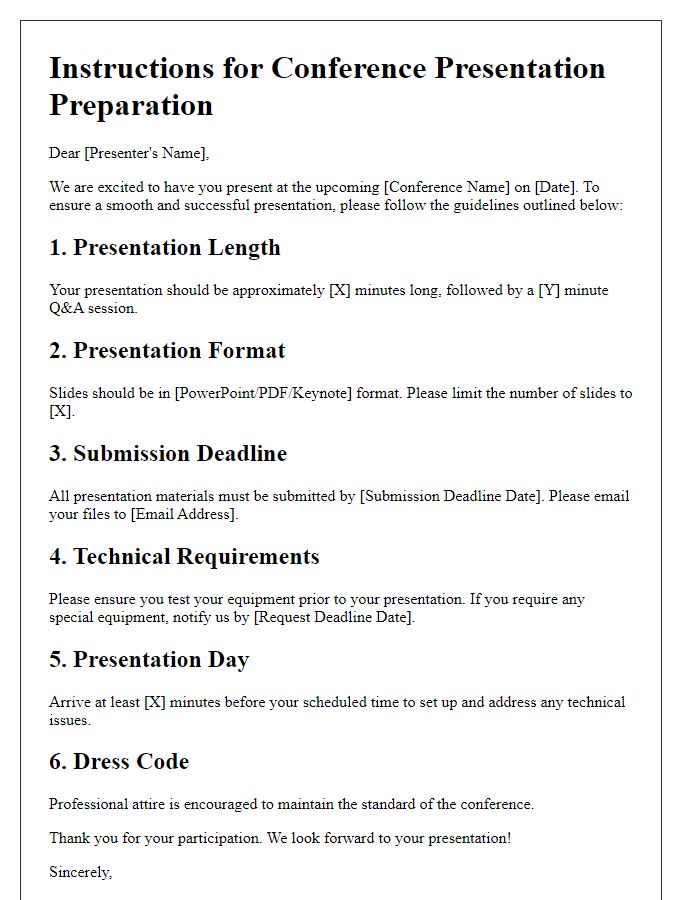

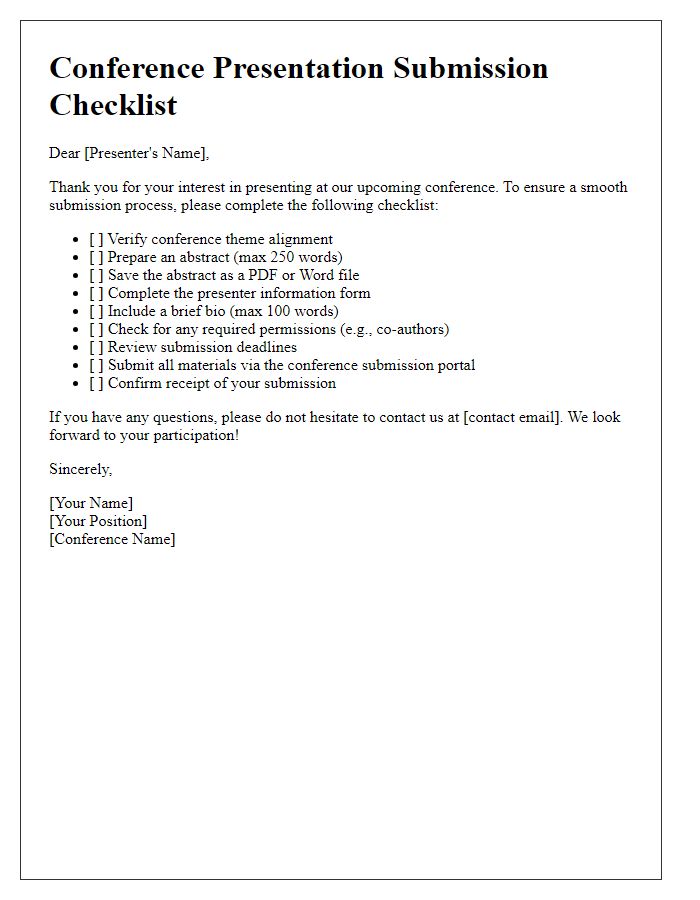
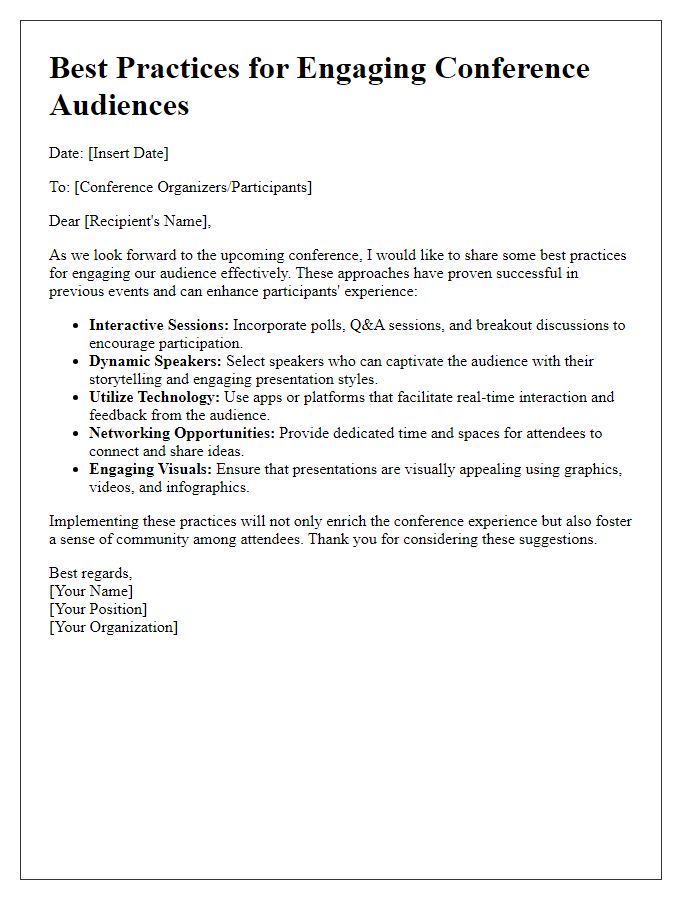
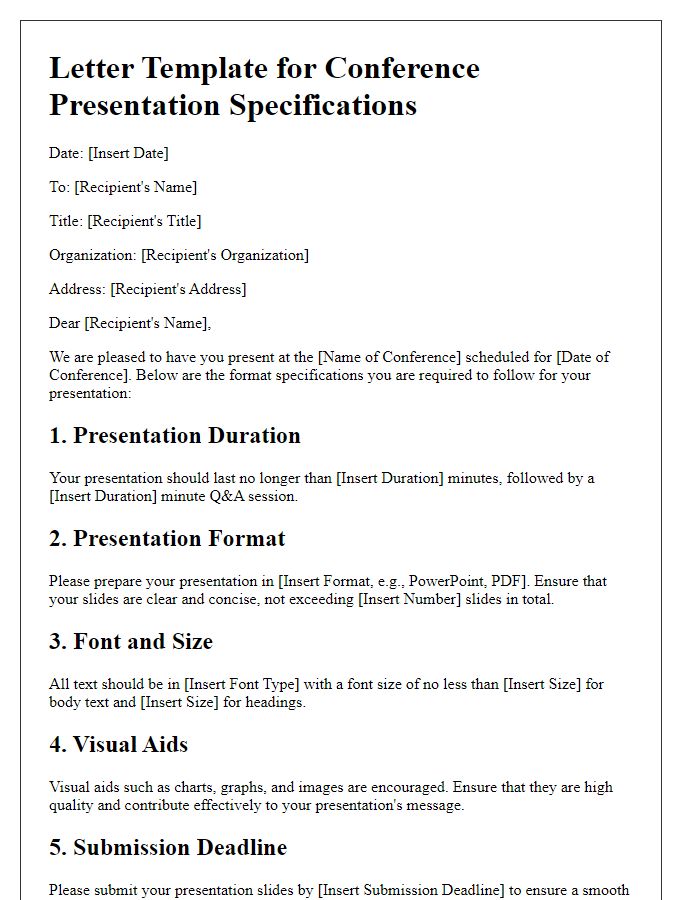
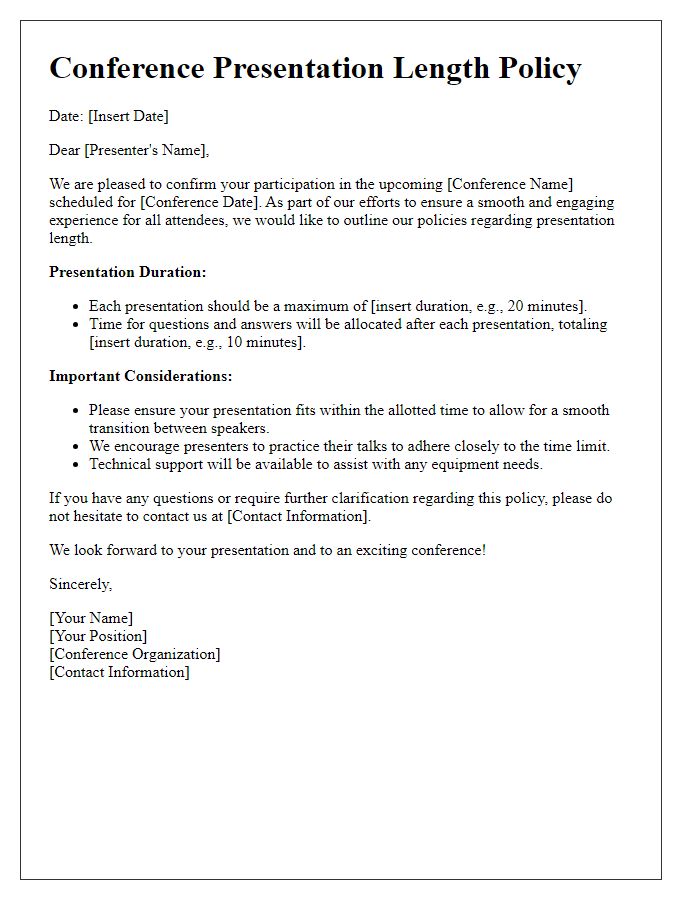
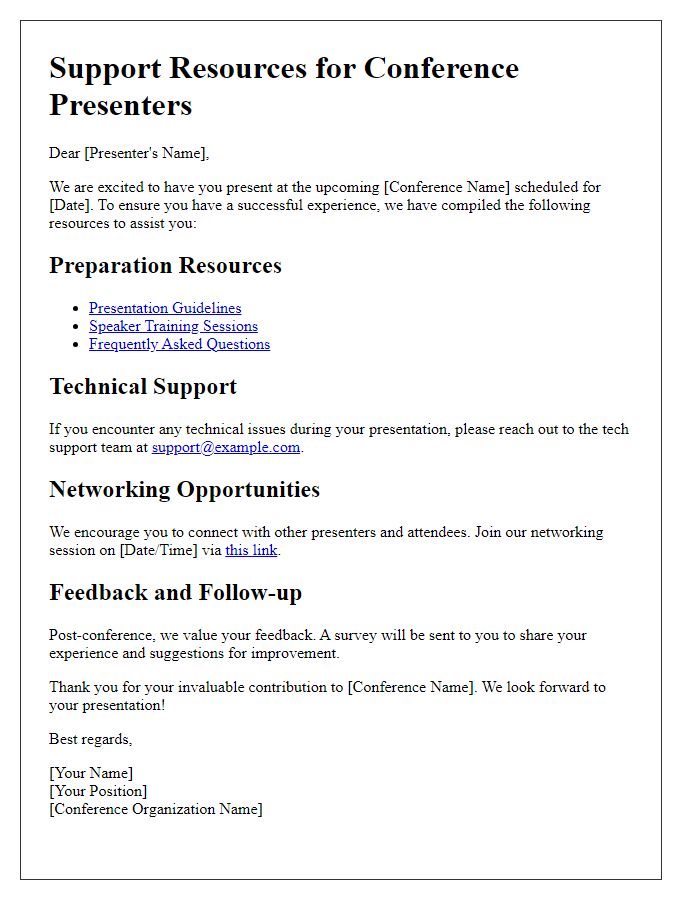

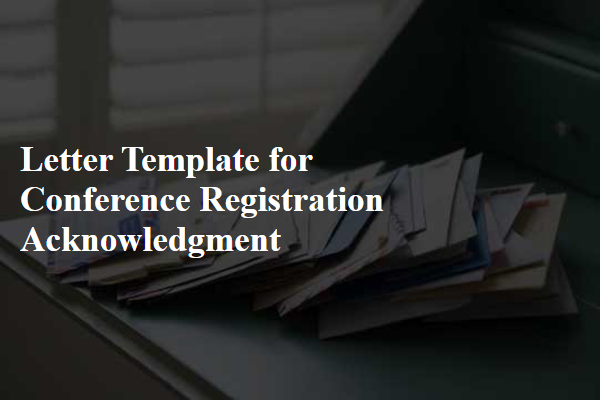
Comments